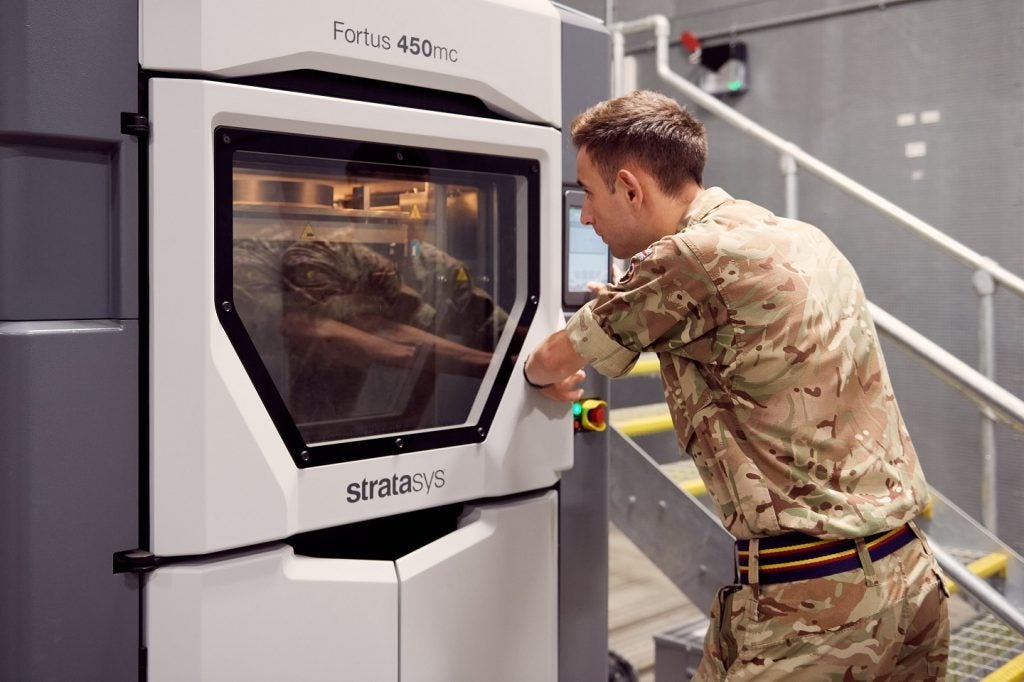
In a world where natural disasters frequently cause untold devastation and human suffering, the efforts of every agency involved in humanitarian relief are of paramount importance, and their effectiveness depends heavily on knowing what is needed and how best to deliver it in a challenging environment, often over long distances. Information is the most vital commodity in planning any relief effort.
Gathering and disseminating the necessary information can be a complex task, especially when many different agencies are involved in the relief effort. For Western relief efforts to reach their intended recipients in a timely manner, the efforts of many agencies must be synchronised and carefully coordinated, and in the US it is the Defense Logistics Agency (DLA) that often holds a key position in that process.
Vital to the DLA’s humanitarian relief activities is the Joint Logistics Operations Center (JLOC), which ensures that all agencies involved in providing aid have a clear picture of what is required, and how best to get the right resources in place.
“Everyone wants to relieve suffering on the ground,” explains Colonel Aaron Geduldig, division chief of the JLOC. “The JLOC is an information gathering operations centre, which gets the necessary information to Admiral Thompson, who is in charge of the centre, and then to other agencies like the Federal Emergency Management Agency (FEMA) or the Department of State. It is a lynchpin of the US response to any emergency. As a defence agency, we are comfortable in the defence environment, but we can work with other agencies outside the defence sector that have different technologies and information,”.
The DLA is the largest logistics combat support agency in the US Department of Defense. It provides support across the world to the army, navy, air force, marine corps and other federal agencies, as well as civilian agencies and foreign countries in peacetime and war. Headquartered at Fort Belvoir in Northern Virginia, it employs around 26,000 people, a large proportion of whom are civilians. As well as supporting 1,700 weapons systems across eight supply chains, its primary function is to source and provide many of the consumable items that military forces need to operate, including food, fuel and energy, uniforms, medical supplies, construction equipment and spare parts through 25 distribution centres around the world. It is this capacity that enables it to turn its expertise and its logistics capability to humanitarian relief.
See Also:
The scope of the DLA’s operations makes it a huge business in its own right (see The DLA: big business, above). Last year it grew to the equivalent of a $38bn business, the money being a defence working capital fund rather than a defence budget, which buys and sells products to US military services. The money is not profit, but is moved in cyclic rotation around agency and military services in order to procure the right equipment and services to support military and relief operations.
How well do you really know your competitors?
Access the most comprehensive Company Profiles on the market, powered by GlobalData. Save hours of research. Gain competitive edge.

Thank you!
Your download email will arrive shortly
Not ready to buy yet? Download a free sample
We are confident about the unique quality of our Company Profiles. However, we want you to make the most beneficial decision for your business, so we offer a free sample that you can download by submitting the below form
By GlobalDataThe JLOC is the operations division within the logistics directorate of the joint staff of the Department of Defense. Its specific brief is to monitor crises, exercises and interagency actions. It acts as the primary point of contact for receiving information from other federal agencies and coordinating with all of the DLA’s field activities to provide assistance during natural disasters.
In this role, its ability to work with agencies like the Department of State (DoS) or FEMA, which is the primary US agency for managing any response to disasters at home and abroad, is of critical importance.
“We have an inter-agency agreement with FEMA and we are in continual communication with them every day, so the information is always shared and the lessons learnt. We do joint exercises every year, and we have continuous systems upgrades,” notes Geduldig.
Humanitarian aid to Haiti
The constant communication between relief agencies to achieve a clear picture of the conditions on the ground in the wake of a natural disaster is the key to delivering aid to challenging environments in the shortest time possible. Often, the logistical challenges are immense, as the local infrastructure may be severely impaired or completely destroyed, and aid must often travel great distances over difficult terrain to reach the needy.
The DLA and the agencies with which it cooperates have seen these problems before, and overcome them, thanks to the training exercises, resources and experience upon which they can call. Their response to the earthquake in Haiti in January 2010 is just one example of their capability.
“The most difficult operations are overseas contingencies with extended supply chains,” says Geduldig. “In a recent exercise we simulated a category five hurricane hitting Hawaii, which would involve a very stretched supply chain. There are also scenarios where an international disaster wipes out the entire infrastructure of a region, then it is hard to get folks there and deliver relief. That is what happened in Haiti.”
Immediately after the earthquake in Haiti, the DLA began working to source and deliver critical supplies for local citizens and for the military personnel who were tasked with implementing the relief efforts as part of Operation Unified Response. The earthquake, which is believed to have killed up to 230,000 people and left up to a million homeless in the Caribbean state, prompted rapid action by relief organisations and nations across the world, but the US was among those at the forefront.
Among the most important of the DLA’s actions was to organise subsistence packages, including ready-to-eat meals (MREs) and water, as well as medical supplies, cots, pillows, sheets and blankets. The US response also included the preparation and deployment of the hospital ship USNS Comfort.
“In Haiti, we did very well. We got relief there within a week and we helped the military in its humanitarian relief efforts. It involved $76m of business and requisition, including $50m of food and $2m of tents and air conditioning units, as well as medical supplies and comfort packages,” says Geduldig.
While there is still much rebuilding work to do in Haiti, the speed and good judgement with which the first response was handled made a significant difference to the people worst affected by the earthquake and its aftershocks. From the US perspective, the success of the operation was in no small part due to the JLOC’s information gathering, sourcing and delivery capability.
Adapting for the future
The experience of delivering aid in the aftermath of the Haiti disaster held many lessons for all agencies involved in the relief effort, but also validated the procedures that were in place to deal with severe emergencies. For the DLA, those procedures are continuously shaped by the testing, evaluation and training exercises that it conducts on a regular basis with other agencies. Those exercises are designed to cover a wide range of scenarios, in recognition of the fact that each emergency presents its own unique challenges. The DLA recently concluded hurricane response exercises, and it will soon participate in a further joint exercise with FEMA to simulate the effects of an earthquake.
This ongoing process of training and interagency collaboration for disaster scenarios is particularly important given that the relationship between the DoS, the DLA and FEMA is constantly changing. At any point in time it is vital to understand what each agency can offer, and how a joint response will be coordinated between the various agencies.
“The people in the game change,” says Geduldig. “FEMA is working to be more self sufficient so that it can respond without the help of other agencies. For instance, with Hurricane Alex in the Caribbean FEMA stood up the response cells and supplied the food. It didn’t call on us, but had us on standby as back up. We have to be flexible to accommodate that new stance.”
“In 2008, with Hurricane Gustav and Hurricane Ike, we set up a distribution management cell with transloading equipment, which was a huge success. FEMA can always call on that kind of capability. We keep a close relationship, even though leaders will lead in different ways and we have to be flexible in how we shape the overall response.”
Furthermore, as leadership and policies change, so do the systems that enable agencies to collaborate effectively. The future will be shaped by the desire of the DLA and others to provide effective humanitarian relief in the most efficient way possible, and they are putting the groundwork in now to ensure that every lesson is learnt from the operations in which they have already been involved.
“At the moment, our systems and FEMA’s systems don’t cross-talk. There are reasons that we can’t fully integrate, some of which relate to security, but we are working on asset visibility through an automated tool that would, for example, allow us to track trucks carrying aid and supplies. We learnt in 2004 and 2005 that intermediary staging bases (ISBs) mean that it is sometimes possible to lose visibility of some trucks, so it is important to improve asset visibility,” comments Geduldig.
“With any disaster there are always unknowns and the ability of first responders is crucial.”
This article was first published in our sister publication Defence and Security Systems International.





